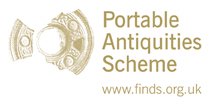Server check!
You are on the training database
Details for Lead Alloy
This material should be used if the object looks leady, but is rather too light. Many lead alloys are alloyed with tin, but in most cases (because lead is cheap!) the lead content will be higher than the tin. The experience of the Museum of London is that it is pretty much impossible to tell when a lead/tin alloy is mostly lead, or mostly tin, apart from the weight. There seems also to be little significance in which alloy is chosen. Ancient 'pewter' is also a lead/tin alloy; the word 'pewter' can be used in the Description field.
Our first choice for a leady object is 'lead' rather than 'lead alloy'; this contrasts with a coppery object, when we use 'copper alloy' unless we are sure that it is reasonably pure copper. This is for two reasons: firstly because copper is normally deliberately alloyed, whereas fairly pure lead is quite commonly used; and secondly because the term 'lead alloy' is convenient to keep solely for these light lead-tin alloys which do not contain copper.
Search the database for all examples created by
Linked data
British Museum URI: 11095


